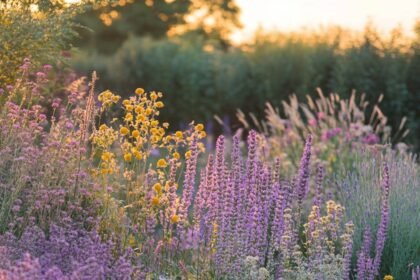Composting is an eco-friendly way to turn your kitchen scraps and yard waste into nutrient-rich soil for your garden. Not only does it help reduce waste, but it also provides a natural fertilizer that can significantly improve the health of your plants. Whether you’re looking to live more sustainably or just want healthier soil for your garden, starting a compost pile is simpler than you might think. This beginner’s guide will walk you through everything you need to know.
The Ultimate Guide to Mixing Patterns in Home Decor | The Best Trees for Small Gardens
How to Design a Small Garden: Tips and Ideas | How to Grow Your Own Herbs at Home
Why Composting is Important
Composting is one of the easiest and most impactful ways to reduce waste and create rich soil that benefits your garden. Food waste and yard clippings can make up over 30% of what we throw away. Instead of sending them to a landfill, you can turn these materials into valuable compost.
Benefits of Composting:
- Reduces waste: Less garbage in landfills means less methane production.
- Improves soil: Adds nutrients and promotes healthy plant growth.
- Saves money: Cuts down on the need for store-bought fertilizers.
How to Start a Compost Pile: Step-by-Step
Starting a compost pile doesn’t require fancy equipment or a large garden. All you need is a bit of space, the right materials, and a little bit of know-how. Let’s break it down.
Step 1: Choose a Location
Pick a spot in your garden that is well-drained and partially shaded. Ideally, it should be near a water source but not in direct sunlight, as too much heat can dry out your compost pile. It can be a designated compost bin or a simple heap in your yard.
Step 2: Gather the Right Materials
Composting works by combining two main types of materials: greens and browns.
- Greens: These are high in nitrogen and include things like fruit and vegetable scraps, coffee grounds, and fresh grass clippings.
- Browns: These are high in carbon and include items like dried leaves, straw, newspaper, and cardboard.
A good compost pile should have an even mix of both green and brown materials. Aim for a 50/50 ratio for best results.
What to Compost:
- Fruit and vegetable scraps
- Coffee grounds and tea bags
- Grass clippings
- Dry leaves
- Shredded paper or cardboard
- Eggshells
What Not to Compost:
- Meat, fish, and dairy products (can attract pests)
- Diseased plants
- Pet waste
- Oils and fats
Step 3: Build Your Pile
Once you’ve gathered your materials, it’s time to start layering them in your compost bin or heap. Start with a layer of brown materials like leaves or cardboard to allow for good air circulation at the base. Then, add a layer of green materials like vegetable scraps or grass clippings.
Alternate between brown and green layers as you build your pile. Remember to keep the pile moist but not waterlogged—think of it like a damp sponge. Too much water can slow the composting process, while too little can dry it out.
Step 4: Turn the Pile
One of the key steps to successful composting is turning your pile regularly. Use a garden fork or shovel to mix the materials every 2-4 weeks. This helps introduce oxygen, which speeds up decomposition.
The more frequently you turn your compost pile, the faster it will break down into usable compost. Regular turning also helps prevent unpleasant odours by ensuring proper airflow.
Step 5: Monitor and Maintain
Check your compost pile regularly for moisture. If it’s too dry, add some water. If it’s too wet, add more brown materials like newspaper or dry leaves to absorb the excess moisture.
After a few months, your compost should start to look like dark, crumbly soil with a pleasant, earthy smell. This is a sign that it’s ready to use in your garden.
Summary Table
| Step | Action |
| Step 1: | Choose a well-drained location in partial shade |
| Step 2: | Gather a balance of green and brown materials |
| Step 3: | Layer materials in alternating green and brown layers |
| Step 4: | Turn the pile every 2-4 weeks to introduce oxygen |
| Step 5: | Monitor moisture levels and adjust as needed |
Starting a compost pile is a simple yet effective way to reduce waste and enrich your garden soil. By following these easy steps, you’ll be on your way to creating nutrient-rich compost in no time. Remember, composting takes a bit of patience, but the results are well worth the effort!
FAQs
Composting can take anywhere from three months to two years, depending on how often you turn the pile and the types of materials you use.
Yes! Composting continues in the winter, though it may slow down due to colder temperatures. To keep the process going, add more brown materials and try insulating your pile with straw.
It’s a good idea to cover your compost pile to retain moisture and heat. A tarp or compost bin lid works well.
Avoid composting weeds that have gone to seed, as they may sprout when you use your compost in the garden.
Your compost is ready when it looks like dark, crumbly soil and has an earthy smell. It should no longer contain recognizable food scraps.




